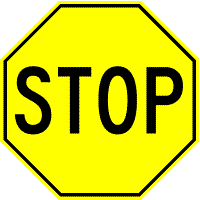- Show results for
- Share
Radiation Detectors Overview
Resource Description

Introduction
Portable Radiation Detection Equipment can be used to detect, measure, and identify radiation. Thorough training, however, is essential in the proper use and selection of equipment.
Overview
Portable radiation detection equipment is used widely in the scrap industry to locate and separate unwanted radioactive scrap. Portable detectors (also: Particle Detectors or Geiger Counters) can have great sensitivity, but their sensitivity is highly dependant upon correct training. Too often, portable detectors are used ineffectively by inattentive or untrained people.
Functions of Radiation Detectors:
- Detecting or Locating
- Measuring
- Identifying
DETECTION
- The MOST important function
- Most detection instruments rely on the operator watching a display
- Digital display usually harder to read than a meter
- Better detection instruments give the operator an audible signal when the background is exceeded
- Detection is not enough - diode lights make user uneasy about how MUCH radiation is present
MEASUREMENT
- Measurement tells the extent of radiation
- The best display scale is microR/hr ( μR/hr or R/hr) or rem, cpm or cps doesn’t tell you dose rate
- “True” dose rate meters will have less detection sensitivity than typical meter, typical meter over-respond at lower gamma energies
IDENTIFICATION
After radiation is found, identification will identify the isotope involved. Typically expensive instruments require advanced training or knowledge. Identification typically takes minutes.
Types of Radiation Detectors
Choosing the correct type of radiation detector is very important. Different radiation detectors may have strengths or weaknesses in the following areas: type of radiation detected, sensitivity, ruggedness, measurement linearity, and spectral resolution. We conditionally divide this type of handheld instruments into 3 categories:
- Pocket dosimeters - simple, personal, and inexpensive;
- Handheld Geiger counters - handy, reliable, convenient;
- Geiger counter with an external probe - rugged, versatile, and sensitive.
How To Use a Typical Radiation Meter
- Make sure that: Audio is ON, F/S (Fast/Slow) is on F (Fast)
- Turn instrument ON and check batteries
- If you have a radiation check source, use it to confirm the correct operation
- Change the range to lowest scale or correct scale to check background
- As you approach possible source, change the range to higher scales as necessary
- Position bottom front of the instrument as close as possible to source (check the manual for most sensitive side)
When to 
- Be cautious measuring radiation above 1000 microR/hr (1 mR/hr). Measure, then limit your exposure by backing off.
- STOP measuring about 2000 microR/hr (2 mR/hr). Back off and call your RSO (Radiation Safety Officer) or state health department.


